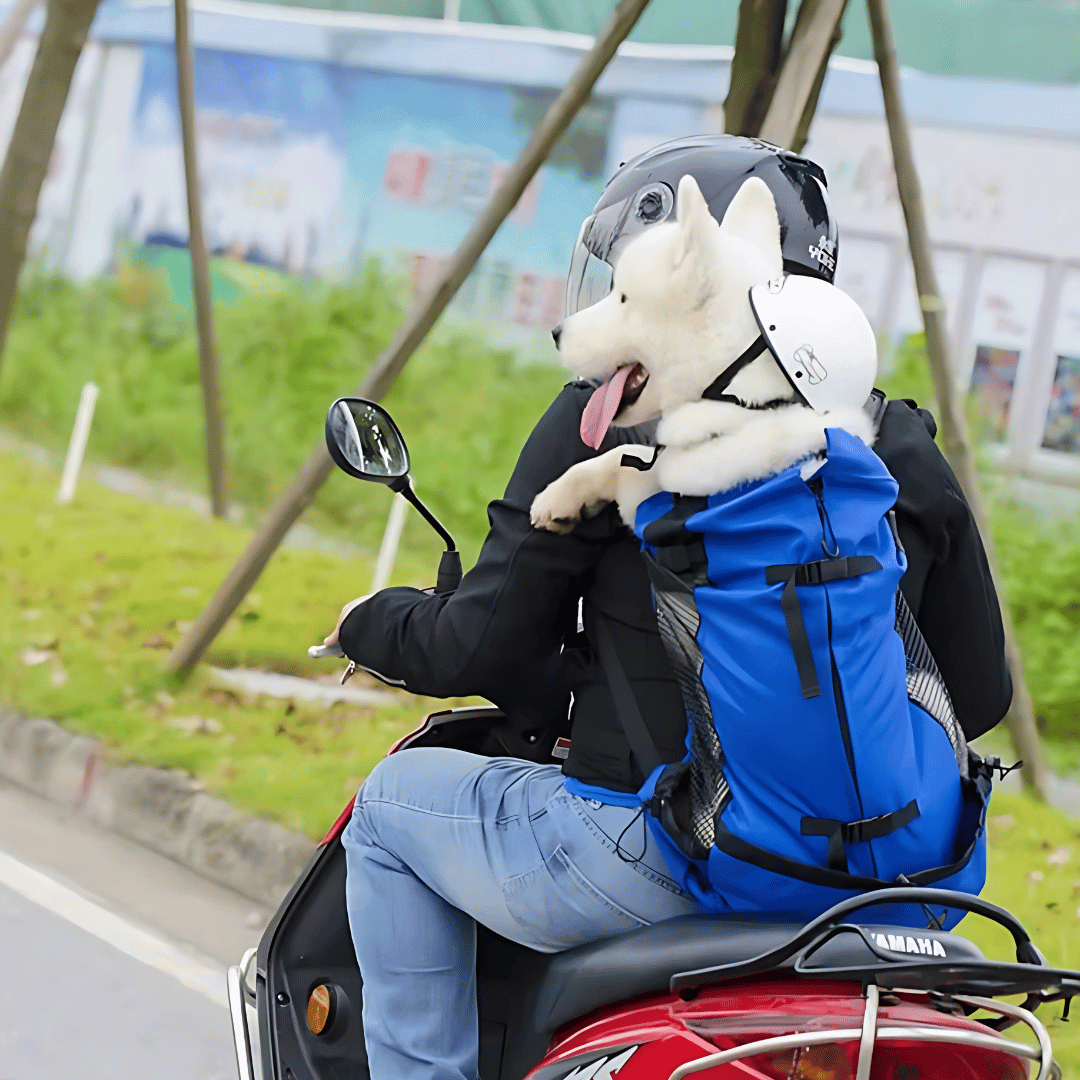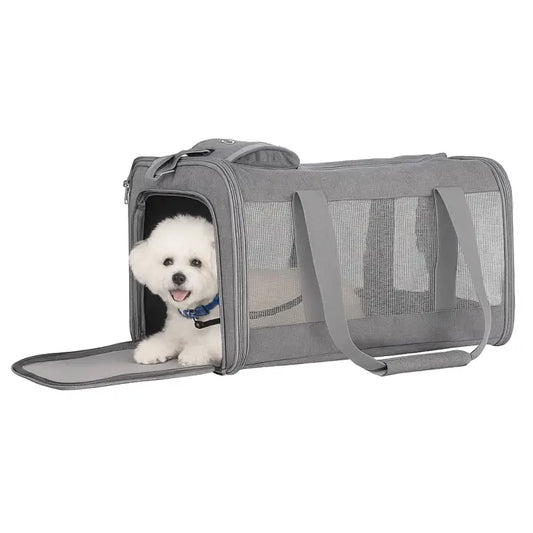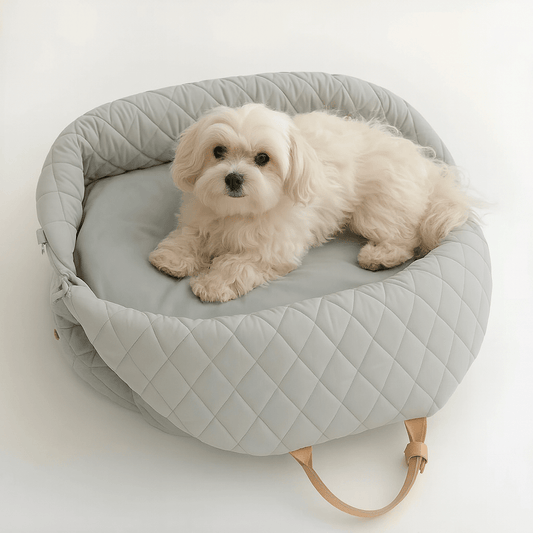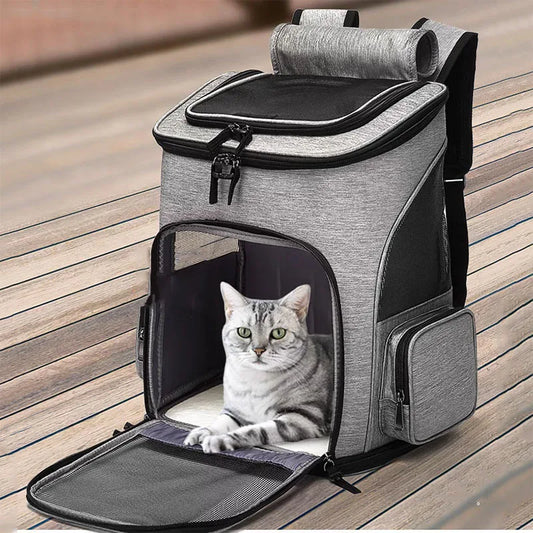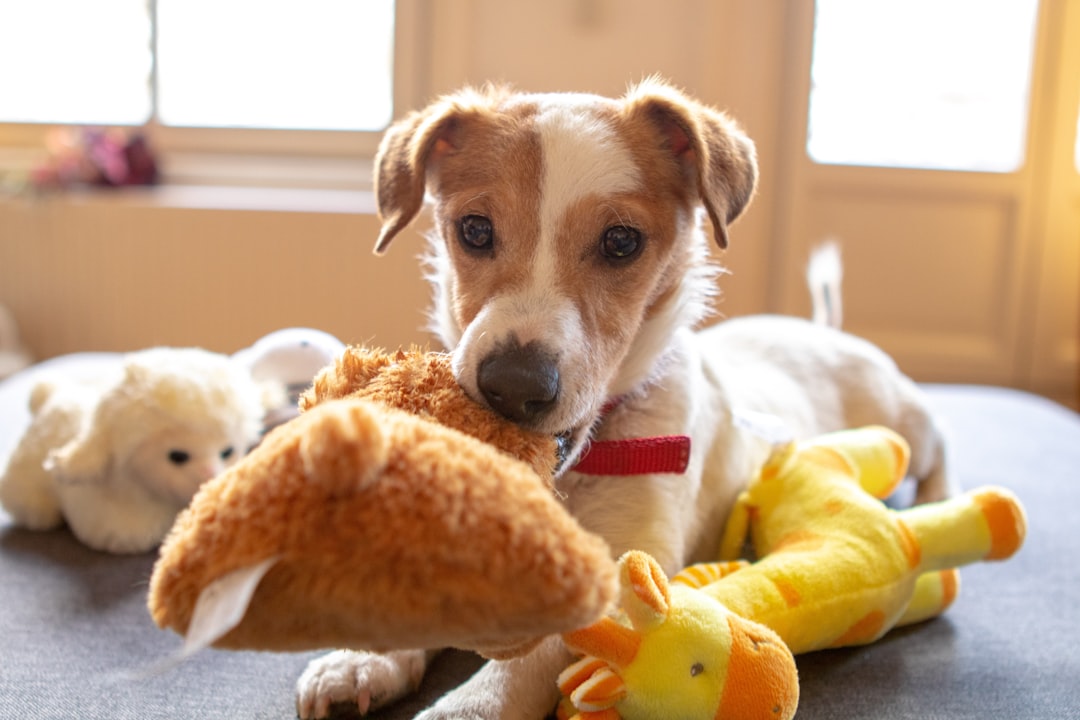
Engaging Activities to Prevent Dog Boredom and Boost Mental Stimulation
Share
Is your furry friend feeling a bit restless? Dog boredom can lead to behavioral issues and decreased mental health in dogs. Engaging your dog in stimulating activities is crucial for their overall well-being.
Neglecting your dog's mental health can result in destructive behavior, anxiety, and depression. On the other hand, providing mental stimulation through engaging activities can strengthen your bond and keep your dog happy and healthy.
Key Takeaways
- Dog boredom can lead to serious behavioral issues.
- Engaging activities boost mental stimulation and overall well-being.
- Neglecting mental health can result in anxiety and depression.
- Providing mental stimulation strengthens the bond between dog and owner.
- Engaging activities keep dogs happy and healthy.
Dog Boredom & Lack of Mental Stimulation: Understanding the Problem
Understanding dog boredom and its effects on canine behavior is crucial for providing a happy and healthy life for your pet. Dogs, like humans, need mental and physical stimulation to stay engaged and active.
Common Signs Your Dog Is Understimulated
Recognizing the signs of understimulation in dogs is vital for addressing the issue promptly. Common indicators include destructive chewing, excessive barking, restlessness, and digging. These behaviors are often a cry for help, signaling that your dog needs more stimulation.
| Behavior | Possible Cause | Solution |
|---|---|---|
| Destructive Chewing | Boredom, lack of appropriate chew toys | Provide durable chew toys, increase exercise and play |
| Excessive Barking | Boredom, attention seeking | Engage in interactive games, increase training sessions |
| Restlessness | Lack of physical and mental stimulation | Increase walks, playtime, and mental stimulation activities |
The Physical and Behavioral Impact of Boredom
Boredom can have significant physical and behavioral impacts on dogs. It can lead to obesity due to overeating out of boredom, destructive behavior that may result in injury, and anxiety or stress-related issues. Addressing boredom is crucial for maintaining your dog's overall health.
Why Some Dogs Need More Mental Stimulation Than Others
Different dogs have varying needs for mental stimulation based on factors like breed, age, and individual personality. For instance, high-energy breeds and younger dogs often require more stimulation than older or less energetic dogs. Understanding your dog's specific needs is key to providing the right level of mental stimulation.
The Science Behind Canine Mental Stimulation
Understanding the science behind canine mental stimulation can significantly enhance your dog's quality of life. Mental stimulation is not just about keeping your dog occupied; it's about challenging their mind in ways that promote overall health and well-being.
How Mental Exercise Affects Your Dog's Brain
Mental exercise has a profound impact on a dog's brain, potentially reducing the risk of cognitive decline. Studies have shown that dogs who receive regular mental stimulation exhibit better problem-solving skills and memory retention. This is because mental exercise stimulates the growth of new neurons and strengthens the connections between them.
The Connection Between Mental and Physical Health
There's a significant interplay between a dog's mental and physical health. Dogs that are mentally stimulated tend to have better physical health outcomes, as mental stimulation can reduce stress and anxiety, which are known to impact physical well-being. A balanced approach that includes both physical exercise and mental stimulation is key to maintaining your dog's overall health.
| Aspect | Mental Stimulation | Physical Exercise |
|---|---|---|
| Benefits | Improves cognitive function, reduces stress | Enhances physical health, maintains weight |
| Examples | Puzzle toys, scent work | Walks, runs, agility training |
Balancing Physical Exercise with Cognitive Challenges
Balancing physical exercise with cognitive challenges is crucial for a dog's overall well-being. While physical exercise keeps your dog fit, cognitive challenges keep their mind sharp. A well-rounded routine that includes both will help prevent boredom, reduce the risk of cognitive decline, and strengthen the bond between you and your dog.
By understanding the science behind canine mental stimulation and incorporating it into your dog's daily routine, you can significantly improve their quality of life.
Interactive Toys That Challenge Your Dog's Mind
Interactive toys provide a stimulating way to challenge your dog's mind and keep them engaged. These toys come in various forms, from simple puzzle toys to complex electronic devices, all designed to provide mental stimulation.
Puzzle Toys and Treat Dispensers
Puzzle toys and treat dispensers are excellent for challenging your dog's problem-solving skills. By figuring out how to get a treat out, dogs exercise their brains. Examples include the Kong Wobbler and Outward Hound Brick Puzzle. These toys can be filled with treats, peanut butter, or even canned dog food, making them versatile and engaging.
Electronic and Smart Toys for the Modern Dog
Electronic and smart toys offer a modern twist on traditional dog toys. They can be controlled via apps, allowing owners to interact with their dogs remotely. Examples include the Petronics IQ Treat Ball and the Furbo Interactive Dog Camera. These toys not only challenge dogs mentally but also provide a way for owners to engage with their pets even when they're not at home.
Rotating Toy Selection for Maximum Engagement
To keep your dog engaged, it's essential to rotate their toys regularly. Introducing new toys or reintroducing old ones can reignite interest. A rotation schedule can be as simple as changing toys every few days or weekly.
Safety Considerations for Interactive Toys
When choosing interactive toys, safety is paramount. Ensure the toys are durable and made from non-toxic materials. Supervise your dog during play to prevent any potential choking hazards or damage to the toy.
By incorporating interactive toys into your dog's routine, you can provide them with the mental stimulation they need to stay happy and healthy.
Food-Based Mental Stimulation Activities
Engaging your dog's mind through food-based activities is a fun and rewarding way to prevent boredom. Dogs are naturally inclined to forage and problem-solve, and using food as a stimulus can be highly effective.
Treat-Dispensing Toys and Food Puzzles
Treat-dispensing toys and food puzzles challenge your dog to figure out how to get a treat out, keeping them engaged and stimulated. These toys come in various difficulty levels, so you can choose one that suits your dog's problem-solving skills.
Snuffle Mats and Foraging Activities
Snuffle mats and foraging activities tap into your dog's sense of smell, encouraging them to sniff out hidden treats. This activity not only provides mental stimulation but also slows down eating, reducing the risk of gobbling food.
Frozen Treats and Lick Mats
Frozen treats and lick mats provide a calming and stimulating activity, especially during hot weather. The act of licking can be soothing, and the challenge of getting the treat out keeps your dog engaged.
Using Mealtime as an Opportunity for Enrichment
Mealtime can be turned into a mentally stimulating activity by using interactive feeders or hiding food around the house or yard. This approach not only challenges your dog but also makes mealtime more engaging and fun.
By incorporating these food-based activities into your dog's daily routine, you can help prevent boredom, reduce stress, and strengthen your bond with your pet.
Training Games to Boost Cognitive Function
Dog training games offer a fun and effective method for enhancing cognitive function. Engaging your dog in these activities not only strengthens your bond but also keeps their mind sharp and active. Cognitive function in dogs is crucial for their overall well-being, influencing their ability to interact with their environment and respond to commands.
Teaching New Tricks and Commands
One of the simplest and most effective ways to boost your dog's cognitive function is by teaching them new tricks and commands. This mental stimulation helps keep their brain active and can slow down cognitive decline. Start with simple commands and gradually move to more complex tasks, rewarding your dog with treats and praise to reinforce their learning.
Scent Work and Nose Games
Scent work is another excellent way to challenge your dog's mind. Dogs have a natural instinct to follow scents, and engaging this sense can be incredibly stimulating. Create simple nose games by hiding treats or toys with a strong scent and encouraging your dog to find them. This activity not only provides mental stimulation but also exercises their sense of smell.
Clicker Training for Mental Engagement
Clicker training is a fun and interactive method that can significantly enhance your dog's mental engagement. By using a clicker to mark desired behaviors and rewarding them with treats, you can teach your dog new tricks and reinforce good behavior. This method is particularly effective because it provides immediate feedback, helping your dog understand what they did right.
Problem-Solving Games and Challenges
Problem-solving games are an excellent way to challenge your dog's cognitive abilities. These can range from simple puzzle toys filled with treats to more complex challenges like figuring out how to get a treat out from under a cup. Gradually increase the difficulty of these challenges as your dog becomes more proficient, ensuring they remain engaged and stimulated.
By incorporating these training games into your dog's routine, you can significantly enhance their cognitive function and overall mental health. Remember, mental stimulation is just as important as physical exercise for a happy, healthy dog.
Indoor Activities for Rainy Days and Limited Spaces
Keeping your dog engaged indoors is crucial for their mental and physical health, especially during rainy days or in limited spaces. Indoor activities can help reduce boredom, destructive behavior, and stress in dogs. By incorporating a variety of engaging activities, you can ensure your dog remains stimulated and happy.
Hide and Seek Games
Hide and seek is a classic game that can be adapted for indoor play. Hide treats or toys around the house, encouraging your dog to sniff them out. This activity not only provides mental stimulation but also exercises your dog's sense of smell. You can also hide yourself, calling out to your dog when you're found, adding an element of fun and interaction.
Indoor Obstacle Courses and Agility
Creating an indoor obstacle course is a great way to keep your dog physically active on rainy days. Use household items like couch cushions, chairs, and tunnels to set up a course. Guide your dog through the obstacles, gradually increasing the difficulty as they become more confident. This activity helps improve your dog's agility, balance, and coordination.
Shell Games and Other Mind Puzzles
Shell games and other mind puzzles are excellent for challenging your dog's problem-solving skills. For example, you can hide a treat under one of three cups or shells and encourage your dog to figure out where it is. This game enhances cognitive function and keeps your dog engaged.
Quiet Indoor Activities for Apartment Living
For dogs living in apartments, it's essential to have quiet activities that won't disturb neighbors. Quiet games like "find the treat under the cup" or "snuffle mats" can keep your dog occupied without making too much noise. You can also provide interactive toys that challenge your dog silently, ensuring they remain engaged without causing a disturbance.
In conclusion, there are numerous indoor activities that can keep your dog engaged, stimulated, and happy, even on rainy days or in limited spaces. By incorporating these activities into your daily routine, you can help prevent boredom and related issues, ensuring a healthier and more balanced life for your dog.
Outdoor Adventures for Physical and Mental Stimulation
Dogs require a mix of physical and mental stimulation, which can be effectively achieved through outdoor adventures. Engaging in various outdoor activities not only enhances their physical health but also provides the mental stimulation they need to stay happy and healthy.
Structured Walks with Sensory Exploration
Structured walks are more than just a routine; they can be an adventure for your dog. By incorporating sensory exploration, you can turn a simple walk into a mentally stimulating experience. Allow your dog to sniff and explore different environments, which can help in reducing stress and increasing mental stimulation.
Dog Sports and Agility Training
Dog sports and agility training are excellent ways to provide physical exercise while challenging your dog's mind. Activities such as agility courses, flyball, and obedience training not only physically exhaust your dog but also mentally stimulate them. These activities improve coordination, strengthen the bond between dog and owner, and provide a fun way to challenge your dog's mind.
"Exercise is a celebration of what your body can do, not a punishment for what you ate." Although this quote is often related to humans, it perfectly encapsulates the spirit of engaging in dog sports and agility training with your canine companion.
Social Interaction at Dog Parks and Playdates
Social interaction is a crucial aspect of a dog's mental health. Dog parks and playdates offer opportunities for your dog to interact with other dogs, reducing the risk of anxiety and depression. These interactions are not just fun; they are essential for a dog's emotional well-being.
| Activity | Physical Benefit | Mental Benefit |
|---|---|---|
| Structured Walks | Improves cardiovascular health | Reduces stress and anxiety |
| Dog Sports | Enhances agility and strength | Improves focus and obedience |
| Social Interactions | Promotes healthy exercise habits | Reduces risk of depression |
Hiking and Exploring New Environments
Hiking and exploring new environments are fantastic ways to provide your dog with both physical exercise and mental stimulation. New sights, smells, and experiences can be very enriching for dogs, keeping them engaged and stimulated.
In conclusion, outdoor adventures play a vital role in maintaining your dog's physical and mental health. By incorporating structured walks, dog sports, social interactions, and hiking into your dog's routine, you can ensure they lead a happy, healthy, and balanced life.
DIY Mental Stimulation Toys and Games on a Budget
Providing mental stimulation for your dog doesn't have to break the bank; with a few simple DIY projects, you can keep your dog engaged and happy. Engaging in DIY activities not only saves money but also adds a personal touch to the toys and games your dog enjoys.
Homemade Puzzle Toys from Everyday Items
Creating puzzle toys from items you already have at home is a great way to challenge your dog. For example, you can turn an old plastic bottle into a treat-dispensing toy by cutting holes of varying sizes in it. As your dog rolls the bottle around, treats will fall out, keeping them engaged.
Repurposing Household Objects for Dog Entertainment
Many household items can be repurposed as dog toys. Cardboard boxes, for instance, can become hide-and-seek boxes where you hide treats or kibble. Old towels or t-shirts can be braided into tug toys, providing a fun and challenging game for your dog.
No-Cost Games to Play with Your Dog
Not all games require toys. You can play hide-and-seek with your dog by hiding in different rooms and calling them to find you. Another game is "Find the Treat," where you hide treats around the house or yard, encouraging your dog to sniff them out.
Creating a DIY Sensory Garden for Dogs
A sensory garden can be a wonderful way to provide your dog with mental stimulation. By planting a variety of dog-friendly herbs and grasses, you can create a sensory experience for your dog. Include different textures and smells to keep them engaged.
| DIY Project | Materials Needed | Benefits |
|---|---|---|
| Homemade Puzzle Toy | Old plastic bottle, scissors, treats | Challenges problem-solving skills |
| Repurposed Tug Toy | Old towels or t-shirts | Encourages physical play and bonding |
| Sensory Garden | Dog-friendly plants, soil, garden bed | Provides a variety of sensory experiences |
Tailoring Activities to Your Dog's Age, Breed, and Personality
Every dog is unique, and their mental stimulation activities should be tailored to their individual characteristics. Just like humans, dogs have different needs and capabilities based on their age, breed, and personality. Understanding these factors is crucial for providing effective mental stimulation.
Activities for Puppies vs. Senior Dogs
Puppies and senior dogs have distinct needs when it comes to mental stimulation. Puppies require activities that help with socialization and basic obedience, while senior dogs benefit from gentle, low-impact exercises that keep their minds active without straining their bodies. For example, puppies can engage in play that involves teaching new commands, while senior dogs can enjoy scent games that challenge their sense of smell.
Breed-Specific Mental Stimulation Needs
Different breeds have unique characteristics that influence their mental stimulation needs. For instance, herding breeds like Border Collies are highly intelligent and require complex tasks, whereas companion breeds may prefer simpler, more interactive games. Understanding the original purpose of your dog's breed can help you tailor activities that suit their innate abilities and instincts.
Adapting Activities for Dogs with Physical Limitations
Dogs with physical limitations, such as arthritis or mobility issues, need mental stimulation activities that are low-impact or can be done from a comfortable position. Using puzzle toys or scent games that don't require extensive physical movement can be very effective. It's also important to consult with a veterinarian to ensure that the activities you choose are safe and suitable for your dog's condition.
Recognizing Your Dog's Unique Preferences
Just as humans have individual preferences, dogs do too. Some dogs may enjoy activities that involve food, while others may prefer play or social interaction. Observing your dog's reactions and preferences can help you tailor activities that they will enjoy and engage with fully. This not only enhances their mental stimulation but also strengthens your bond with them.
Conclusion: Creating a Balanced Mental Stimulation Routine
A well-rounded dog routine that includes a variety of mental stimulation activities is crucial for maintaining your dog's mental health. By incorporating the activities discussed in this article, you can help prevent dog boredom and boost cognitive function.
A balanced mental stimulation routine can be achieved by mixing interactive toys, training games, and outdoor adventures. For instance, you can challenge your dog's mind with puzzle toys and treat dispensers, teach new tricks, or engage in scent work and nose games. Outdoor activities like structured walks, dog sports, and hiking can also provide mental stimulation.
It's essential to tailor your dog's mental stimulation activities to their age, breed, and personality. By doing so, you can ensure that your dog receives the right amount and type of mental stimulation. A balanced mental stimulation routine will not only improve your dog's mental health but also strengthen your bond with them.
By adopting a comprehensive approach to your dog's mental health, you can help create a happy, healthy, and well-adjusted companion. Start by introducing new activities into your dog's routine and observe their response to determine the best balance for their mental stimulation needs.
FAQ
How often should I rotate my dog's toys to keep them engaged?
Rotating your dog's toys every few days can help keep them engaged and interested. You can also try introducing new toys or reintroducing old favorites to keep things fresh.
Are interactive toys suitable for all breeds and ages of dogs?
Most interactive toys are suitable for dogs of various breeds and ages, but it's essential to choose toys that match your dog's individual needs, size, and skill level. For example, puppies may require softer, gentler toys, while older dogs may need toys that are easier to manipulate.
Can I use regular household items to create DIY mental stimulation toys?
Yes, many household items, such as cardboard boxes, paper bags, and plastic containers, can be repurposed as DIY mental stimulation toys. Get creative and experiment with different items to challenge your dog's mind.
How can I adapt mental stimulation activities for my dog with physical limitations?
For dogs with physical limitations, focus on low-impact activities that challenge their minds, such as scent work, puzzle toys, or short, gentle training sessions. Consult with your veterinarian or a professional dog trainer to develop a customized plan.
Can mental stimulation activities help reduce my dog's stress and anxiety?
Yes, mental stimulation activities can help reduce stress and anxiety in dogs by providing a healthy outlet for their energy and emotions. Engage your dog in activities that challenge their minds and promote relaxation.
How do I know if my dog is getting enough mental stimulation?
Monitor your dog's behavior and adjust their mental stimulation activities accordingly. If your dog appears bored, restless, or destructive, it may be a sign that they need more mental stimulation. Consult with a professional dog trainer or behaviorist for personalized guidance.
